Search the Community
Showing results for 'Electric'.
-
so after reading so many bad reviews about the civic hybrid and several good reviews about the pirus i'm wondering if 100% electric cars will be a good move in the near future, if the battery can withstand our sunny temperatures anybody got any experience to share? what is the lifespan of such batteries? the civic groups complain a whole lot about their batteries but the people who own the piruses seem to be very happy with their cars, so it does seem like a split down the middle
-
Source: https://www.motor1.com/reviews/690621/2025-porsche-macan-ev-review/ Welcome to the future. The future of Porsche, at least, and Audi, too, eventually. Underneath that whisp of cladding and all the black vinyl is the new, all-electric Porsche Macan, the first product built upon Volkswagen Group's Premium Platform Electric. PPE is set to deliver a new generation of high-end electric Porsches and Audis to boot. After a day of hustling a prototype of the new Macan around California roads, I'm here to say that the future is looking bright. Bright, but also perhaps a bit murky. While this is an EV Macan, it won't be called "Macan EV" or "Macan Electric." It's just called Macan, and while it is set to enter the market in early 2025, the internally combusted Macan isn't going away. Yes, you'll have your choice of not one but two models built on two different platforms, both called Macan, at dealerships soon. Confusing? A smidge, yeah, but this is very definitely the one you'll want. The Next Generation When it comes to first acts, it's hard to do better than the Taycan. Porsche's first EV made the transition from luscious concept to desirable production machine smoother than most. It'll be a hard act to follow, but from what I just experienced behind the wheel, the new Macan won't be lingering in the second-album doldrums. Let's get some of the critical figures out of the way first – or as many as we can, at least. Porsche is still playing its cards pretty close to its chest on this one, so we're not quite dealing with a full deck. The electric Macan's PPE platform will deliver a battery pack with a capacity of around 100.0 kilowatt-hours, with a range that Porsche says will test "well beyond" 500 kilometers on the European WLTP test. That equates to somewhere north of 310 miles of range, a significant boost over the Taycan's current maximum rating of 246 miles. However, that is on the rather more challenging EPA test cycle. With all that uncertainty, it's difficult to say what the Macan's US, EPA-rated range will be, but somewhere in the 275 to 300 mile range seems reasonable. And how about power? All Macans will be all-wheel drive with a dual-motor setup, but three different power levels will be available. Porsche has yet to figure out just how to brand this thing, but you can imagine it arriving in dealers as something like a Macan 4, 4S, and Turbo to follow current Taycan branding. Porsche again doesn't have specific power figures available, but I was told the top-shelf Turbo trim would manage around 450 kilowatts. That's just a tick over 600 horsepower. The top-shelf Macan GTS today offers 434 hp. That is a healthy jump, to say the least. That power will surely come with a considerable increase over the GTS's roughly 4,400-pound curb weight, too, but Porsche hasn't confirmed a figure. And, just to round out all the TBDs, we don't have pricing on the electric Macan either, but don't be surprised if it starts above the Macan GTS, which currently has an MSRP north of $85,000. Monster Macan Now that we've established all the unknowns let's dig into the known: This thing is a monster. I drove a variety of flavors of electric Macan on a beautiful day hustling through the Malibu hills, but I started in a model that Porsche's engineers would only describe as "top" trim. That meant all the power, all the handling goodies, and the air suspension, lacking only the rear steering option. So, that meant somewhere north of 600 hp put to the road through two electric motors. Unlike on Taycan, the rear motor no longer has a two-speed transmission, but it is augmented by an active rear differential with torque vectoring. I started my day, as so many SoCal drivers do, stuck in traffic, dawdling along over some questionably paved stretches of asphalt. My first impressions were of a car that's remarkably compliant and comfortable for commuting. It's quiet, too, as you'd expect an EV to be, but given this was such an early prototype, I'd expected some squeaks and rattles or some degree of excessive road noise. There wasn't a hint. The roads cleared as I got out of town. As the asphalt started snaking, I was able to pick up the pace. Dropping the Macan into Sport mode delivers an immediate and noticeable change in character. The throttle response immediately sharpens, the suspension likewise stops being so soft and starts getting real. After being nearly lulled to sleep in earlier gridlock, I confess I was not expecting the new Macan to be such a powerhouse in the turns. The harder I pushed, the better it responded, really coming alive when I twisted the mode dial over to Sport Plus. Soon I was comfortable enough to have the all-season Continental tires at both axles squealing in complaint through the corners. The Macan did remarkably well at managing the grip from those increasingly overtaxed tires. Yes, the Macan tended to understeer, but in the sort of safe, predictable way that makes sense for a car like this. That understeer wasn't terminal by any means. Turning the wheel a little more and adding a little throttle resulted in the nose coming around every time, that rear differential doing its magic. Oversteer was easy to provoke, and the Porsche's various stability management systems were kind enough to let me enjoy it. In hours of overly aggressive driving, tires squealing, I only felt one significant intervention. And the power? Addictive. On Sport Plus, the throttle is incredibly sharp, the kind of delivery that may cause neck injuries for passengers not receiving fair warning before you step on it. The power requires some modulation as you accelerate out of tight corners, but that rear differential does a lot of work to keep the thing moving in the right direction. I later sampled cars with the rear-steering system, and that just added more agility to the mix. It's paired with an even sharper variable steering ratio to make the car feel almost too eager to get to the apex, a feeling that is utterly addictive. And the less-powerful electric Macans? While they certainly lacked the eye-opening thrust of that top Turbo (or whatever Porsche calls it), they're still properly quick. Their accelerative performance should be easily on par with any of the internally combusted Macans. The feeling across the range there is equally good when it comes to braking. The brake pedal has confidence-inspiring firmness yet still enough travel to comfortably work through traffic without complaint from back-seat passengers. That feel, though, is entirely synthetic. The electric Macan uses a brake-by-wire pedal system that, behind the scenes, relies on electric regenerative braking as much as possible before seamlessly calling in some help from the physical brakes. Thanks to the Macan's 800-volt battery system, the car can pull a lot of juice from those motors during regen, meaning you'll only need the physical brakes under serious decel. If and when the brake performance is degraded due to temperature or the like, a Porsche engineer told me the pedal feel will modulate to give feedback to the driver. But, on a hard, hot day of charging through the California hills, I never felt a hint of fade, simulated or otherwise. Sadly, though, there's one fly in this ointment: one-pedal driving. Porsche is still sticking to its guns: If you want to slow down, you'll need to move your foot from accelerator to brake. I can't argue with the engineers that it may be the more efficient way to drive, but then you also can't argue that PDK transmissions are quicker and more efficient than manuals, and yet Porsche is quite proud to offer those to its sports car enthusiasts. Plenty of electric car enthusiasts prefer one-pedal driving, myself very much included, and as Porsche gets more serious about EVs, it'd be nice if the company acknowledged that. After all, adding a high-regen mode is a heck of a lot simpler than adding a third pedal.
-
Very insightful video, all eyes on you gahmen. We want a better public transport to make us more green!
-
SINGAPORE - Electric van leasing company EVCo has been put under insolvent liquidation, with debts of almost $50 million. EVCo, also known as Strides DST, is 60 per cent owned by transport operator SMRT’s business arm Strides Holdings and 40 per cent by Dishangtie Green Technology (Hong Kong). The two-year-old firm was incorporated in March 2022 with a paid-up capital of $10 million. The company was put under provisional liquidation not long after its former chief executive officer Fuji Foo and chief financial officer Janice Low were arrested in connection with a police investigation in late 2023. A list of creditors obtained by The Straits Times showed that as at Feb 28, there were 28 creditors with $49.4 million due to them. It is not immediately clear if more creditors had come forward since Feb 28. The list showed that the biggest amount is due to OCBC Bank, which is owed $47.6 million. SMRT itself is owed $38,675, while various Strides-related units are owed a combined amount of around $590,000. Baker Tilly has been appointed liquidator. Mr Timothy Reid, a principal at Baker Tilly, said the company is in insolvent liquidation – meaning whatever remaining cash and assets will not be enough to repay all its debts. Sources said assets include a fleet of China-made electric vans, which would have devalued substantially on the back of sliding certificate of entitlement prices. Electric vehicles left unused for a prolonged period are also likely to suffer from battery degradation. Mr Reid added that all the creditors so far are unsecured creditors, which implies that there is no defined priority as to who gets repaid first. While it is not common for banks to give unsecured loans, especially to start-ups, The Straits Times understands that some do so based on the standing of a parent company or majority shareholder; in this case, Temasek-owned SMRT. As Strides-DST is a private limited company, the liability of its shareholders is limited to the amount of capital they contributed. When contacted, SMRT would only say that EVCo had gone into voluntary liquidation and an independent liquidator has been appointed. Strides-DST chairwoman Judy Lee was unreachable for comment. Meanwhile, OCBC Bank would not comment, citing Singapore’s banking secrecy Act. One creditor, who spoke on condition of anonymity, said: “I’m speechless. But I’ll say that this is down to poor management, poor execution and exploiting loopholes.” In October 2022, the company announced its target to have a fleet of 2,000 electric vans for a vehicle-sharing programme, which allows SMEs different leasing packages, including a pay-per-use option. Half a year after it was set up, EVCo said it would have 550 vans ready from January 2023. In March 2023, the company registered 197 Chinese-made Shineray electric vans. EVCo is the only company to offer this brand of vehicle in Singapore. According to the Land Transport Authority, there were 218 Shineray vehicles registered in 2023. https://www.straitstimes.com/singapore/transport/electric-van-leasing-firm-evco-declared-insolvent-with-debts-of-close-to-50m
- 23 replies
-
- 4
-

-
.png)
-
- electric car
- smrt
-
(and 1 more)
Tagged with:
-
Officially unveiled at the Vantage Automotive Centre, the Atto 3 debuts as BYD's first-ever contender in the local compact crossover segment. Coincidentally, the SUV also marks the third passenger-car model by the Chinese maker here, following in the footsteps of the best-selling e6 and van-turned-MPV M3e. A single permanent magnet synchronous motor, paired to a 60.5 kWh Blade Battery, helps to produce 201bhp (150kW) and 310Nm of torque - apparently good for a 7.3 second century sprint. With the Blade Battery, the crossover's NEDC-rated range also clocks in at an impressive figure of 480km. Thanks to its battery architecture, DC fast charging via CCS at up to 80kW is offered on the Atto 3, bringing the battery from 20% to 80% state-of-charge within 42 minutes. AC charging at up to 6.6kW, on the other hand, will see a full recharge done in 9.5 hours. Worth noting is that the Atto 3 falls under the A1 band of the VES, allowing it to qualify for the highest ARF rebate of $25,000. The Atto 3 comes with a refreshing dual-tone interior, mixing blue and beige upholstery (in our eyes at least - the combination is called "Eclipse Blue + Hazy Grey" by BYD) with red-stitching on the seats. Shaped contours across the dash, guzheng-inspired strings along the door bins, and disc-like aircon vents all continue to distinguish the cabin of the crossover. While the driver gets a fully digital five-inch display behind the multi-function steering wheel, taking centerstage is the 12.8-inch Intelligent Rotating Infotainment Display, which can be oriented in either 'portrait' or 'landscape' mode. Another high-tech feature the car offers is the ability to be unlocked and locked via an NFC Keycard. Strangely, it appears that Apple CarPlay and Android Auto will only be available in Q4, although Bluetooth Phone Connectivity does come as standard. A BYD OS App will also debut somewhere down the line. The marque's name is spelt out boldly in capital letters too on the car's electrically-operated tailgate, which opens up to 440 litres of boot space (this can be expanded to 1,340 litres with 60:40 folding seats). Five different colours are available for potential owners of the Atto 3, including Surf Blue and Parkour Red. Test drives for the BYD Atto 3 are now being offered and the car open for booking. Local authorised dealer E-Auto has also announced that the car will launch with a special price of $178,888 (the number is supposed to be auspicious), inclusive of COE. Feature Highlights Wireless Apple CarPlay and Wireless Android Auto Wireless Smartphone Charging Inbuilt Navigation Electric Tailgate Sunroof Driver and Passenger Electric Seats 12.8" Intelligent Rotating Touchscreen 360° View Camera Adaptive Cruise Control Lane Keep Assist Lane Departure Warning Blind Spot Monitor Rear Cross Traffic Alert Front and Rear Pre-collision Warning Had the opportunity to visit Vantage before the Atto 3's official launch and I must say I left the showroom impressed with the direction BYD is going with its electric vehicles. Granted, the interior styling might be a bit tacky for some, but it is mighty packed with features. Full specs and features here.
- 268 replies
-
- 12
-

-
- byd atto 3
- byd
-
(and 4 more)
Tagged with:
-
https://thedriven.io/2022/03/15/byd-seal-atto-4-electric-sportscar-to-rival-tesla-model-3-confirmed-for-australia/amp/ China doing what they do best, copying According to the source, this can do 0-100 in 3.9 s
-
my wife's car has electric water pump and electronic controlled thermostat when I was parking the car in a mall 10km away from home recently, the radiator fan suddenly kicked into high speed, a few seconds later, these dreaded red messages popped on both screens, no check engine light, my OBD scanner was at home so I didn't scan the car on the spot I popped the bonnet, expansion tank level was good, no visible coolant leakage trace around engine bay and sump guard, no evaporated coolant scent, engine bay heat seems normal... I let the car cool down for 3 hours, it started and run normally, in less than 400m, from B2 of the car park to the street level, the coolant temperature shot through the roof and the engine power was limited, so I stopped the car immediately at the road side and called a tow truck to tow it to the workshop while waiting for the tow truck, I felt both the radiator and expansion tank with my hand, radiator was luke warm but the expansion tank was too hot to touch I left a note on the dashboard for the workshop on the symptoms and my suspect of electric water pump and/or thermostat failure they scanned the car and found an error code on seized water pump, strangely it didn't pop the fuse, they replaced both the EWP and thermostat, finger crossed car is 2 years 2 months old, 82,000km it caught me off guard, before it failed, there was zero warning - zero leakage - pump was silent - no fuse was popped - no error code - zero warning message it worked until the last second and kaboom and I have only a couples of minute to react, imagine cruising on busy highway the combo looks like a giant frankenstein artificial heart, the plastic part is the thermostat and the cast alloy part is the pump now I missed the good old KISS (keep it simple stupid) mechanical driven pump and thermostat 🙄
-
Source: https://www.arenaev.com/mercedes_teases_electric_gclass-news-2786.php Mercedes-Benz is gearing up to revolutionize the iconic G-Class with an all-electric variant, and CEO Ola Kaellenius claims it could outshine its traditional counterpart in off-road prowess. In an outdoor video featuring the electric G-Class, Kaellenius, along with chief engineer Fabian Schossau, shed light on the vehicle's development and unique features. Four years have passed since Mercedes-Benz's initial announcement of an electric G-Class, and much remained shrouded in mystery - until today. Today we got a closer look at the electric G and its off-road capabilities - cue the video: One glance at the electric G-Wagon, and you'd be hard-pressed to miss its signature boxy silhouette. Kaellenius proudly states that this electric incarnation retains the unmistakable appearance of a true G-Class. While the video's prototype was camouflaged, Mercedes-Benz had previously unveiled the Concept EQG in 2021, offering a glimpse of the essential design elements. For rigorous testing, the development team headed to the Schoeckl mountain in Graz, Austria - the very place where the G-Class was born. The electric off-roader underwent a grueling regimen, ascending and descending the mountain 336 times. It showcased its off-road prowess thanks to a novel drivetrain concept featuring four electric motors, one at each wheel. Smart software managed torque distribution, enabling remarkable off-road capabilities, including a G-turn. Mercedes is not just focusing on off-road capabilities; it's also pushing the envelope in battery technology. The electric G-Class will employ a cutting-edge silicon anode battery, expected to boost energy density by 20 to 40% compared to conventional lithium-ion batteries. This advancement could substantially extend the vehicle's range, a crucial factor for electric off-roaders. The G-Class is known for its ruggedness and has a cult following. The electric variant's potential to match or even surpass the traditional model in off-road capabilities is a significant point of interest. It marks a notable shift in the automotive landscape towards electrification without compromising on performance. While purists may raise their eyebrows at the notion of an electric G-Class, Kaellenius assures them that the traditional ICE (Internal Combustion Engine) version will continue alongside the electric variant. This dual approach ensures that fans of the iconic off-roader can still experience the roaring power of a gasoline engine. One detail that remains elusive is the exact release date for the electric Mercedes-Benz G-Class. However, industry watchers speculate that it could hit the market in 2024, likely as a 2025 model-year offering.
-
Source: https://www.motor1.com/news/686396/2024-hyundai-konda-electric-debut/ Hyundai today released additional details about the 2024 Kona Electric, including preliminary range estimates, specifications, and US availability. The current generation is among the few affordable electric vehicles in the US starting at under $35,000. The next generation is imminent and seems like a significant upgrade, at least on paper. The Korean carmaker had shared powertrain and production details early this year, but now we a few more details on the US-spec model. Design The Kona Electric’s nose is more aerodynamic with cleaner surfacing, and it continues to feature a split headlamp design, although the LED DRL is now full-width. Designers have also attempted to embed the parametric design theme from the Ioniq 5 with the creases on the side profile, and sculpted wheel arches, although reminiscence to its bigger sibling is little to none. It’s also more slippery, with a drag coefficient of 0.27, a slight improvement over the previous figure of 0.29. It also features active grill shutters to improve airflow when closed and cool the battery when open. The EV is longer, wider, and has an enlarged wheelbase compared to its predecessor. It measures 171.5 inches long (+5.9 inches), 71.9 inches wide (+1 inch), and 62.2 inches tall. Boot space is rated at 25.5 cubic feet, while the frunk only offers nine-tenths of a cubic foot (27 liters) of space. Battery, Range The Chevrolet Bolt EV competitor features a marginally larger battery pack, but the range estimates are nearly identical. The current Kona Electric draws power from a 64-kilowatt-hour pack, while the 2024 model will feature a 64.8 kWh battery capacity. Hyundai’s preliminary internal testing has indicated a 260-mile range, just two miles more than the current generation's 258-mile EPA range. The standard battery variant is estimated to have 197 miles of range. Charging times have improved slightly. Ten to 80 percent state of charge (SoC) can be achieved in 43 minutes with 400V Level 3 DC fast charging. Customers living in the colder US regions can also opt for battery pre-conditioning. Power output remains identical, with the long-range version’s front axle-mounted electric motor delivering 201 horsepower and 188 pound-foot of torque, while the standard range variant is rated for 133 hp and 188 lb-ft. More Features New features include vehicle-to-load functionality, with 1.7 kilowatts of maximum power output. There's also a new Smart Regenerative system which can alter the brake energy regeneration strength based on real-time traffic, an improved interior with ambient lighting, body-colored interior accents, and dual 12.3-inch panoramic screens for the gauge cluster and infotainment among other items.
-
20 single-deck electric buses each from BYD and ST Engineering Land Systems 10 single-deck and 10 double-deck electric buses from Yutong The buses will progressively arrive in Singapore from next year, with the final batch delivered in 2020 Source: The Straits Times
-
Source: https://www.straitstimes.com/singapore/transport/traffic-police-to-add-electric-polestar-2-to-highway-patrol-fleet-in-2024 SINGAPORE - A fleet of 19 quick, silent and exhaust-free electric Polestar 2 saloons will be patrolling our expressways from 2024. The Traffic Police (TP) have picked the Swedish car out of several bidders in a public tender called in October 2022 and which closed on Jan 31, 2023. Besides Polestar (represented by local agent Wearnes Automotive), other bidders included South Korea’s Hyundai Ioniq 5 (jointly submitted by Hyundai agent Komoco and Hyundai Motor Group Innovation Centre Singapore), China’s BYD Seal and Germany’s BMW i4 and iX1 (all submitted by Malaysian motor group Sime Darby). Wearnes Automotive’s winning bid was around $3.8 million, which includes a maintenance programme for the cars over 10 years. According to documents in GeBiz, the other bid values were not far off, except for Hyundai’s, whose value of about $1.9 million excluded the maintenance component. The cars are tax-free and do not require certificates of entitlement. The Polestar 2 will be the dual-motor all-wheel drive variant, capable of reaching 100kmh in 4.5 seconds and a top speed of 205kmh. It has an 82kWh battery, which gives it a range of around 470km on Singapore roads – provided it is not involved in repeated high-speed chases. These figures far exceed the minimum requirement in the tender, which stated that cars should be able to reach 100kmh within 8 seconds, and have a battery capacity of at least 60kWh. The Straits Times understands the first Polestar cars will be delivered in 2024, and replace ageing highway patrol vehicles from brands such as BMW, Subaru and Volvo. The new cars will be the first electric cars to wear the Traffic Police expressway patrol livery. Previous models included the diesel BMW 325d, and petrol-powered Subaru WRX, Volvo S40 and Volvo S80. The tender has an option for an additional three Polestars to be delivered, bringing the potential electric fleet to 22. Before they are delivered, the cars will be fitted with police equipment and paraphernalia. A sizeable portion of the tender value will go into retrofitting these. The TP’s move is seen as part of Singapore’s initiative to move towards cleaner energy vehicles in a bid to reduce emissions. The Government aims to ban the registration of new pure combustion engine cars from 2030, and to have all vehicles here running on cleaner energy by 2040, although it is unclear what precisely “cleaner energy” entails. Sources said other police departments are also shopping for EVs, including all-wheel-drive seven-seaters – a rarity in the electric segment. A number of law enforcement agencies in other countries have already included EVs in their fleet. In 2019, the Australian state of Victoria bought a Tesla Model X for highway patrol duties, reported EV news portal Driven. Several jurisdictions in the United States have added EVs to their fleet, including New York City, which ordered 184 Ford Mustang Mach-Es, according to Automotive News. London is trying out a fleet of Tesla Model 3s, reported The Guardian in 2021. Recently, the British police added the Polestar 2 to their fleet, although it is the pre-facelift version, unlike Singapore’s, which will be getting the latest facelifted version.
-
Source: https://mothership.sg/2022/09/bluesg-electric-opel/ BlueSG is launching 500 electric Opel Corsa-e hatchbacks gradually from October 2022, The Straits Times reported. The cost of the new cars was estimated to be about S$80 million, or S$160,000 for each car, at prevailing COE (certificate of entitlement) prices. BlueSG will have more than 1,000 cars on road A BlueSG spokesperson told ST that "200 or so" new Opel cars are on the way. If it goes according to plan, BlueSG, an exclusively electric car-sharing firm here, will have a fleet of about 1,000 cars in total before 2022 is over.There are some 800 two-door compact BlueCars on the roads in Singapore. BlueSG had some 650 cars plying the roads in Singapore in February 2021, and ST reported 250 more cars were gradually introduced subsequently. BlueCars are made in Italy. The Opel Corsa-e is Spanish-made. It has four doors. Acquired about a year ago In October 2021, home-grown engineering group Goldbell completed its acquisition of BlueSG from French transportation giant Bollore Group. The new Opel Corsa-e cars are being introduced almost a year after the acquisition. BlueSG is a loss-making business, ST reported. But Goldbell had said it would invest S$70 million up to 2026 to turn things around. Rental rates for the new cars, with more advanced features, are expected to be higher. Top photos via BlueSG
-
Source: https://www.motor1.com/news/693042/mazda-iconic-sp-concept-rotary/ The Mazda Iconic SP concept made its debut at the Japan Mobility Show today with a novel feature that sports car fans have been clamoring for since 2012: a rotary engine. Looking very much like the company’s Vision Study design piece from last year, the fixed-roof Iconic SP is a bit larger than the current MX-5 Miata, making it a tantalizing continuation of the RX-7’s legacy. But unlike that legendary coupe, the Iconic SP makes use of its two-rotor mill not to drive the wheels, but to charge a battery of unknown capacity, which then sends juice to an unspecified electric motor layout. While there are those burning questions about the so-called R-EV’s powertrain specifics, wherever the juice comes from, there sure is a lot of it – 365 horsepower to be precise. Mazda says the rotary can run on a variety of fuels, including hydrogen and renewable fuel, and the battery can also be plugged into a home outlet to recharge it. Coming in at 164.6 inches long by 82.8 inches wide and 45.2 inches high, the Iconic SP is 10.5 inches longer than a current MX-5 Miata and 4.1 inches shorter than a 1995 RX-7. According to the company, the Iconic SP weighs in at a slightly portly 1,450 kilograms (3,197 pounds), making it about 400 pounds heavier than the RX-7 and about 800 pounds more than the Miata. Such is the price one pays for electrons, and the Iconic SP still isn’t that heavy compared to the 3,342-pound Toyota Supra or 3,519-pound Nissan Z. It wears its size very well, too. Mazda says the compact powertrain allows a very low hood and ultra-compact dimensions, and the Iconic SP’s Coke-bottle fenders provide a modern contrast to the RX-7-style windows and rear hatch. The automaker’s modern grille shape appears on the nose, and Venn-diagram taillights recall both the NA-generation Miata and FC-generation RX-7. The doors open in a graceful, upward motion, not unlike Aston Martin's swan wing design. The Iconic SP is painted a beautiful shade called Viola Red, which is brighter than the company’s signature Soul Red Crystal – appropriate for a sports car. Inside, the Iconic SP is a triumph of minimalism, with a typewriter-key gear selector, digital instrument cluster, and small infotainment display being the only distractions from its curvaceous, flowing design. The kakenui stitching first seen on the CX-90 SUV appears on the Iconic SP concept’s dashboard and door panels, and the seats wear biofabric upholstery (a word we haven’t heard Mazda use since it developed a seat material made from renewable plastic in 2009). The combination of plug-in electric and range-extender tech isn’t new, even at Mazda – the MX-30 PHEV has a 0.8-liter single-rotor powerplant under the hood to keep the battery charged. The two-rotor engine in the Iconic SP might displace 1.6 liters, given the MX-30 uses a 0.8-liter single-rotor design. What’s more, the mill in the sports car can be used as a V2L generator, appropriate for everything from tailgate parties to backup power during severe weather. Mazda describes the engine architecture as scalable, so it’s possible the renewable-fuel rotary technology could be used for other applications. Dedicated home generators could make use of small-displacement rotaries, while larger vehicles could potentially daisy-chain rotors together to make bigger power. That said, the Iconic SP concept is a vehicle that is intended to underscore Mazda’s commitment to driving enjoyment first and foremost. “Mazda will always deliver vehicles that remind people that cars are pure joy and an indispensable part of their lives,” said company Representative Director, President, and CEO Masahiro Moro. “As a car-loving company that mass produces the inspiring mobility experience, we are committed to shaping the future … where everyone can proudly say, ‘We love cars.’”
-
Source: https://www.cnet.com/roadshow/news/lanzador-concept-previews-first-all-electric-lamborghini/ Following the debut of its upcoming Revuelto plug-in hybrid super sports car, Lamborghini takes another step into the electric age, unveiling a concept "ultra GT car" that will eventually become its first fully electric vehicle. Meet the Lamborghini Lanzador. The Lanzador is long -- nearly 197 inches from bumper to bumper -- and large, a 2+2 coupe that blends inspiration from the everyday-driveable Urus SUV and the super-sports-coupe-on-stilts Huracan Sterrato. The result is what Lambo is calling an ultra GT that matches the performance of a sports car with the space, comfort and silent operation of a full-size luxury cruiser. Meanwhile, the elevated ride height and liftback configuration add a bit of active lifestyle utility flavor to this multitool of a concept vehicle. Stop me if you've heard this one before. I spoke with Lamborghini's Design Lead Mitja Borkert, who pointed out the Lanzador's use of key Lamborghini design elements -- the squared-off shoulders and greenhouse, the single sweeping roofline that flows from nose to tail and the cab-forward proportions. The Lanzador's large size and tall ride height is in some part due to the realities of designing around an electric battery pack and the ultra GT's mission as a comfortable, luxurious commuter, but even so the automaker was able to create a surprisingly low seating position and, hopefully, a driving experience evocative of the Revuelto. More than a megawatt Behind the Lanzador's genre-bending design is an incredibly flexible and customizable network of performance systems. At the concept's debut, CEO Stephan Winkelmann hinted that we should expect more than a megawatt (over 1,341 horsepower) output through wheels via a full-electric all-wheel drive system. Lambo CTO Rouven Mohr later told me in an interview that the Lanzador will likely stick with two electric motors -- rather than three or more -- which the brand's engineers feel is a sweet spot for power, packaging, weight and driving feel. Beneath the cabin lives an advanced battery pack that promises high performance and "long range." Lambo isn't disclosing range targets or capacity at this point in development, but Mohr says to expect battery tech and chemistry shared with other members of the Volkswagen Group. Transform and roll out I was most interested in the Lanzador's wild aerodynamics. Mohr explains that the mission of the Lanzador as a grand tourer that drivers will live with every day means you can't just whack a big wing on the back like the Huracan STO, so his engineers went about hiding one of the most advanced active aerodynamics systems I've ever seen inside and underneath the EV's silhouette. Motorized aerodynamic elements in the bumpers, front splitter and rear diffuser deploy in an instant to increase downforce as necessary. Louvers hidden under the hood draw high-pressure air from the wheel arches to reduce drag. Carbon-fiber strakes rise from either side of the rear skylight to guide air over or through the spoiler integrated into the rear decklid. Even the headlamps feature air guides that flow air over and through even more aerodynamic elements hidden on or under the hood. Watching the Lanzador change from low-drag cruiser to high-downforce performer -- aero bits deploying and the suspension hunkering down -- is a bit like watching a Transformer do its thing, but Mohr was most proud of the next generation of Lamborghini's Integrated Control software. AI-powered performance "In the future, the hardware will not be the game changer," Mohr states. "You need a certain level of hardware, but the game changer is the Integrated Control system, because this defines how the car is reacting. In our first electric car, we go to [software version] 3.0, which means we incorporate all the active systems, including the active aerodynamics, and we have also much more possibilities in the steering of the electronic model and this will allow us to have an outstanding driving behavior." Lamborghini envisions that this Integrated Control version 3.0 will also integrate machine learning and artificial intelligence tech to adapt to the driver and the driving conditions, for example, predicting grip based on information gathered from the sensors and tweaking the electric motors' torque distribution or noticing the driver's behavior on a long straight stretch of highway and adjusting the aerodynamics and suspension for increased range and comfort. The Lanzador will also see an increased focus on driver aid tech with piloted and automated driving systems slated to make an appearance. Inside, the Lanzador's double-cockpit cabin is framed by a large center console that echoes the Y-shaped motif found in the headlamps. Dual screens rise from the dashboard at startup like the Countach's classic pop-up headlamps, presenting the driver with a digital instrument cluster and the front passenger (or co-pilot) with infotainment information. The steering wheel and center console feature unique physical controllers with a sci-fi design. The entire cabin makes use of exotic eco-friendly materials, including recycled carbon fiber suspended in bioresin, sustainably harvested Merino wool and 3D-printed recycled foam. Meanwhile, the flexible second row boasts room for two passengers or outdoor gear like a bike or surfboard beneath the Lanzador's transparent roof. The future of Lamborghini The production version of the Lamborghini Lanzador is slated to arrive in 2028, giving the automaker five years to finalize all of the details. In the meantime, expect a refreshed version of the Urus to arrive within the next year. It'll be sporting a new plug-in hybrid powertrain for the next few years before also making the jump to full electric with a completely new generation slated to join the Lanzador in 2029.
-
This informative video explains the real world challenges that electric vehicles are facing, which is not about the cost, battery technology and range.
-
Source: https://www.lowyat.net/2022/270902/smart-1-official-launch-specs/ Seven months after Concept #1 was revealed in Munich, the revitalise smart Automobile Co. has officially launched its first production model for the company’s new all-electric era, the smart #1. In case you’re wondering, the actual way to pronounce the EV’s name is “smart HASHTAG one” according to the official launch video. In case you are not familiar with the current iteration of smart Automobile Co., the company is no longer a full subsidiary of Mercedes-Benz but has been transformed into a joint venture between the company and Geely. As such, the Stuttgart giant is responsible for the design of the new smart #1 while the engineering portion is being handled by its Hangzhou counterpart. Exterior-wise, smart has generally retained the design lines of its Concept #1 for the production model albeit with some differences such as smaller 19-inch wheels, a less extravagant glass roof, and rear doors that still have front-mounted hinges. Measuring 4270mm long, 1822mm wide, and 1636mm tall alongside a wheelbase of 2750mm, the 1,820kg SUV also features concealed door handles and frameless doors together with up to 411L boot space and a 15L front boot. Alongside customisable ambient lighting, the smart #1 is equipped with touchscreen infotainment & vehicle control system that features a 12.8-inch Full HD display while the driver has also been provided with a 9.2-inch Full HD digital instrument cluster and a 10-inch Head Up Display. For the Premium and Launch Edition variants of the EV, there is also a 13-speakers audio system from Beats. Featuring a 200kw rear-wheel-drive setup that produces 272PS of power together with 343Nm of maximum torque, the SUV has a maximum speed of 180km/h. Through the car’s 66kWh battery, smart claimed that its new SUV is able to reach a maximum range of between 420km to 440km according to the WLTP standards. As always, charging times depends on the type of charger used with the smart #1. According to the company, the SUV can be charged from 10% to 80% in under 3 hours with a 22kW AC charger or in under 30 minutes when using a 150kW DC charger. Despite the official announcement today, smart didn’t reveal anything regarding the release date or the pricing for its new all-electric compact SUV. While Proton Edar has recently signed a deal to bring smart EVs into Malaysia, the company also has yet to make any official announcement regarding the availability of smart #1 for our market.
-
https://www.torque.com.sg/features/shaping-the-future-with-audi-design/ In a decade, Audi claims that the company will go 'fully electric' as the world moves forth in its quest for environmental stewardship and climate sustainability. This ambitious goal will make the brand industry pioneers of a new generation of automobiles. With a new skysphere concept, Audi aims to create vehicles that can physically transform themselves to fit the driver. An SUV might be able to shorten its wheelbase and lower itself to make it more agile in tight spaces. While this concept looks and sounds cool (like something out of a sci-fi film), is it truly enough to fulfill the futuristic vision that the brand has? What are your thoughts on this?
- 10 replies
-
- 3
-

-
- audi
- electric vehicle
-
(and 2 more)
Tagged with:
-
Kudos to Lotus for going against all odds to come out with this proper sedan of its own, no longer just a badge engineered Proton. Lotus Electric Sedan Shows Its Sleek Production Body For First Time Following the unveiling of the Eletre electric performance SUV, Lotus Cars is applying the finishing touches to another all-electric product that takes the sleek shape of a fastback sedan. Internally codenamed Type 133, the Lotus electric sedan may be named Envya or Etude based on earlier trademark filings from China. A prototype has been spotted by one of our photographers undergoing cold weather testing in northern Scandinavia, near the Arctic Circle. Previously shown in shadowy teasers, the Lotus electric sedan makes its first appearance in the wild without bulky disguise in the form of this test prototype, giving us the best look so far at the brand's future Porsche Taycan rival. Despite the livery that pays tribute to Lotus Cars' 75th anniversary, we can draw some conclusions about its styling. The sedan features several common cues with the Lotus Eletre. Those include the split headlights and rear light bar – though the prototype has placeholder lights at the moment – diamond-pattern active lower grille, rising belt line, rearview cameras instead of side mirrors, and pop-out door handles. Other details worth a mention include a roof-mounted LiDAR and massive ventilated brake discs hugged by chunky calipers. Overall, the low-slung fastback sedan looks aggressive and will certainly provide more surprises once the camouflage tape gets removed. Inside, the new Lotus EV is expected to share the seats and steering wheel with the Eletre, as well as other components. It will be a four-seater with a full-length center console, and it will likely offer a full glass roof. Not much else is known about the new model, and that includes the powertrain. However, the automaker doesn't have too look too far for a high-performance dual-motor AWD powertrain as it can borrow the dual-motor AWD setup from the Eletre R that makes 905 horsepower (675 kilowatts) and 985 Newton-meters (726 pound-feet) of torque. The Lotus Eletre R does 0 to 62 mph (100 km/h) in just 2.95 seconds and hits a top speed of 165 mph (265 km/h), so you can imagine this powertrain can achieve even superior performance when paired with a more aerodynamic (and possibly lighter) bodywork. Whatever powertrain this Lotus electric sedan prototype has under the skin, it wasn't working properly on that particular day as one of the photos shows it on the back of a tow truck. This is quite common for test prototypes, especially in early development stages. Lotus will reportedly unveil the Type 133 later this year, with sales expected to follow sometime in 2024.
-
https://www.straitstimes.com/life/motoring/singapore-made-electric-race-car-taking-shape This race car design by SUTD students very interesting Hope they will really build it out and display somewhere in Singapore to see
-
TL;DR - An owner of a BMW iX Electric gets caught charging his $460,000+ car at a public power outlet. I pay taxes. You pay taxes. We all pay taxes. But, when you see $hit like this, you can’t help but get angry at where some of our taxpayers’ money goes to. Watch the video here to see if it infuriates you as well: How much is the car? A quick search on Sgcarmart revealed that this car is the more expensive variant and costs a whopping $460,888! How expensive does it cost to charge a car? As I’m not an owner of an EV, I just did a quick Google search and turns out, it’s really cheap to charge! So why would the owner of an expensive car choose to do this? Let’s see what netizens think shall we? Online Chatter COE is quite insane at the moment. Sounds dangerous. Insurance does not cover stupidity after all. ========= Be the first to get the latest road/ COE news, and get first dibs on exclusive promos and giveaways in our Telegram SGCM Community. Join us today!
- 2 comments
-
- bmw
- ix electric
- (and 8 more)
-
While many auto manufacturers are gearing up for the next wave of automotive revolution, to produce more electric cars (including PHV - Plug-in Hybrid Vehicle) in-lieu of gasoline / diesel powered vehicles, are buyers and local government agencies (e.g. LTA, NEA, SCDF, BCA, etc.) ready for this big wave, and I am not merely referring to the basic infrastructure concerns, such as charging and servicing facilities. As the title suggested, this thread is more for taking an in-depth view on Safety and Environmental concerns, with regards to sales, usage, servicing and disposal of electric cars (mainly with the batteries). For a start, I will just be touching on the following, while more topics will be added in due course. I would welcome all to share their thoughts, and relevant stakeholders to take a leaf out of this topic. 1. Batteries At the moment, there are 2 main type of batteries commonly used in electric / hybrid vehicles: i) Nickel Metal Hydride (NiMH) ii) Lithium Ion (Li-ion), which uses different cathode materials such as Cobalt Dioxide, Nickel-cobalt-manganese, Nickel-cobalt-aluminum, Manganese oxide spinel & Iron phosphate. NiMH is most widely used in automotive industries as it is relatively safe in term of raw materials use, during charging / discharging, and emit less harmful substances during a fire, BUT have a lower power density (typically about half of what Li-ion can do), meaning it will either have a shorter traveling distance, or take up much more usable space (and weigh more) if to maintain a certain mileage. Li-ion, on the other hand, while enable electric cars to cover hundreds of miles per charge (without taking too much boot or cabin space), are much more hazardous, in the way that it can have a run-away reaction (resulting in fire / explosion) when exceeded a certain operating / storage temperature (~60 °C), emit toxic gases and substance during a fire, so more awareness and precaution is needed. Due to the characteristics of these batteries, special considerations have to be taken during storage, handling and usage, such as proper ventilation (to prevent gas built up - Oxygen, Hydrogen, etc.), minimized risk of dropping / knocking (Li-ion batteries maybe be rendered unsafe if dropped or subjected to sever impact), means of safety cut-off (to prevent over heating, triggering run away reaction) and such. 2. Building Infrastructure With reference to the above, special facilities (with precise temperature monitoring and control, enhanced ventilation system, specific fire-fighting system and equipment) maybe required for storing large amount of batteries. Mixed occupancy, i.e. storage and workshop facilities under the same roof, have to be carefully evaluated, to identify incompatible activities, e.g. workshop may produce excessive heat / spark (ignition source) thereby increasing the risk of fire / explosion. Also, is the existing fire compartmentation for building (fire code, regulations) sufficient to contain battery fire? Li-ion batteries for example will continue to burn once it hit the auto-ignition temperature, and the only control is to cool the surrounding to prevent fire from spreading to neighboring premises / units. In the case of an electric vehicle fire within say a basement car park, building structure must be able to withstand the period of time when the batteries continue to burn, ventilation system to be able to effectively remove toxic gases produced, such as CO, Ni & Li vapor, and means of cooling provided to contain the fire. 3. Fire Fighting and Emergency Response Interestingly, the most commonly used dry power extinguisher is NOT going to work on Li-ion batteries. Beside using cat D extinguisher - for metal fire (which is not commonly available anywhere), the next best option is water, mainly to cool down the surrounding and lower the battery temperature (to prevent explosion). And for fireman, the protocol is to attempt fighting the fire ONLY WITH proper respiratory protection - full breathing apparatus (prevent inhalation of toxic gases / vapors). If you thing this is no big difference from other fire fighting attempts, you are wrong. Fireman will also have to adopt the proper procedure. One important step is to cut off the power supply to the vehicle. Tesla has done pretty well in detailing the steps to fight fire on it vehicles (through publishing Emergency Response Guides for vehicles in their lineup). And hopefully our fireman from SCDF, when deployed to handle such electric car fire, will be fully aware of these steps... And here is a video taken recently, when a team of firefighters in Austria was responding to a Tesla Model S on fire. Firefighters with full BA set (breathing apparatus) Firefighters accessing to power disconnection switch And the responsible shall be shared by the owner of electric car too. They have to be fully aware of what to do when their vehicle catch fire, and keeping the fireman informed of the key information, e.g. location of power cut off switch, battery packs, etc. 4. Servicing and Disposal of Batteries The onus shall be mainly on the workshop and dealer performing the job (provided the owner send their electric cars to the right place for the job). Beside safety concerns with the high voltage of the electrical system, proper charging and discharging process must be observed during replacement. For example, if the positive and negative terminals of the battery come into contact, short circuit will arise, followed by fire. On environmental front, proper supply chain has to be established, to ensure that the used batteries will be disposed in accordance to local and international standards and guidelines. And during the treatment process, again, the toxic material and gases have to be properly taken care of. T.B.C.
- 205 replies
-
- 20
-

-
- electric car
- safety
-
(and 7 more)
Tagged with:
-
There's been so much going on about how EVs are the future and how EVs are cheaper to run than ICE cars because of the low maintenance cost - technically the only maintenance for an EV would be your tyres, brakes, fluids, battery and wiper blades lol - and how electricity (per km) is cheaper than fuel (per km). Our colleague Desmond takes the BMW X3 and its electric counterpart the iX3, for an apple-to-apple comparison to figure out if it's really cheaper to go electric. Copied the table above from the article just for those who are lazy to click in but it's an interesting read so click here if you can afford the 5 minutes read. Some might also argue there are intangible costs not mentioned in the article e.g. time and inconvenience costs while waiting for your EV to charge up. EV owners will be asking everyone to look at the bigger picture - not so much about cost savings but doing our collective part to reduce emissions and help fight global climate change. The current electric cars in the market are much more expensive than ICE cars and will probably put off most car buyers from switching over (at least for now), but the early adopters will be key to driving technological advancement and improvements. What do you think? Do you see yourself changing to an EV in the next 5 to 10 years?
- 90 replies
-
- 2
-

-
- electric car
- savings
-
(and 3 more)
Tagged with:
-
2023 Porsche Macan Electric Spied Looking Like A Diamond In The Rough source: https://www.motor1.com/news/549499/porsche-macan-ev-spy-shots/ The retractable rear spoiler is staying, but the fake exhausts are not. Nov 22, 2021 at 3:46am ET By: Adrian Padeanu Less than 20 years ago, Porsche was all about sports cars. Then the Cayenne arrived to signal Zuffenhausen's portfolio expansion, which continued with the likes of the Panamera sedan / Panamera Sport Turismo wagon and the smaller Macan crossover. Fast forward to 2021, the German high-end brand is also selling a fully electric Taycan sedan joined by a couple of zero-emissions Cross Turismo / Sport Turismo wagons, with another EV on the way. Debuting in 2022, the all-electric Macan will likely go by a fresh name to distance itself from the combustion-engined model, which is expected to go out of production as early as 2024. In the meantime, our spies have caught several prototypes of the crossover testing without a gasoline mill in the company of a white Taycan. Never mind the stickers slapped onto the front to mimic the headlights because the real ones are already visible and take after those of the Taycan and the Mission E concept before it. Interestingly, the prototypes are also carrying around an extra set of lights mounted lower in the bumper, which makes us think those are the main clusters and the upper ones are only for the daytime running lights. The prototypes are not exactly pretty what with the extra body cladding and an unusual melange of old and new body parts. We do get to see the retractable rear spoiler in action, along with Porsche's now typical fake exhaust tips it installs on electric prototypes to show Germans do have a sense of humor. The quarter window is nothing more than a sticker to hide the rear glass, and it would appear the Macan EV will have a more sloped roofline judging by the inclination of the tailgate, giving it a sportier look. There is a fair amount of extra disguise on the derrière and we're fairly certain those dotted taillights are not the final setup. The positioning of the third brake light has changed compared to the gasoline-fueled Macan where it's mounted in the roof spoiler like on virtually most cars that have a tailgate. The prototypes are riding on large 21-inch wheels wrapped in winter tires. Riding on the Premium Platform Electric (PPE) architecture, the silent Porsche Macan will be a sportier and more expensive alternative to the Q6 E-Tron as part of a tie-up between Porsche and Audi to develop the new platform. Unlike the lesser MEB hardware, PPE-based electric vehicles will accommodate rear-wheel steering, air suspension, torque vectoring, and support for 350-kW charging thanks to the 800V setup like the Taycan and E-Tron GT. PPE won't be just for crossovers as it will be used by the two brands for upper midsize and luxury class vehicles, including even wagons. Audi has already previewed an A6 E-Tron coming as a Sportback before the middle of the decade and chances are Porsche will be putting the PPE to good use on additional products beyond the electric Macan. Both the Q6 E-Tron and Macan EV will be officially unveiled later next year, with the dynamic electric duo going on sale in 2023.
-
Hi, my Mazda 3 (2014) driver's electric seat got problem. It now cannot 'rise up', but still can move forward, backward and down. Anyone knows where can repair and roughly what's the cost? Thank you.
-
Been a late comer to the EV era, I think this show hand / all-in moment is Toyota way of playing catch up (heh look here, I have everything ready ok!)... But the fact remain that they are quite far behind other big names from Europe, Korea and China. During the media briefing on battery EV strategies, Akio Toyoda shocked the automotive world by unveiling 15 fully electric concepts previewing future models of Toyota and Lexus. What must be the largest rollout of concept cars in history includes everything you can imagine, from city cars, sedans, SUVs of all shapes and sizes to pickups and sportscars. Some of them are based on existing models, but there are also several all-new vehicles based on the EV-dedicated e-TNGA architecture. The “showroom of the future” as Akio Toyoda called it, had a bunch of other EVs hiding behind the curtain. The lineup for the Lexus brand includes its first dedicated EV called the RZ which is the production version of the LF-Z Electrified concept. Then there is a sports battery EV that looks like the spiritual successor of the LF-A with an expected cruising range of over 700 km (435 miles) thanks to solid-state batteries, and an expected 0-100 km/h (0-62 mph) acceleration in the low 2-second range. Additionally, we saw full-size prototypes of a large SUV (Lexus Electrified SUV) and an unnamed Lexus-branded sporty sedan. The latter also appeared in hatchback form in the official renderings, alongside a 2+2 cabriolet featuring similar styling. Last but not least, Akio Toyoda showed us another series of models calling them “the diverse Toyota EVs”. These include commercial vehicles like an autonomous shuttle bus, a compact van designed for both business and leisure, and a versatile urban EV. The Compact Cruiser EV incorporates styling features from the FJ Cruiser in what could become an off-road-focused five-door EV. Next to it, there is Toyota’s first electric dual-cab pickup which appears to be similar to the Hilux or the Tacoma in terms of dimensions but gets modern design features inspired by the larger Tundra. The Small SU EV looks like an electric CH-R with a dynamic styling approach, while the Crossover EV is slightly larger and more subtle in terms of exterior design, likely previewing Toyota’s entry into the C-SUV segment. Finally, there is an EV sportscar with mid-engined proportions and a two-seater cabin which could become the future MR2 serving as Toyota’s treat for petrolheads. T.B.C.
- 28 replies
-
- 13
-

-
.png)





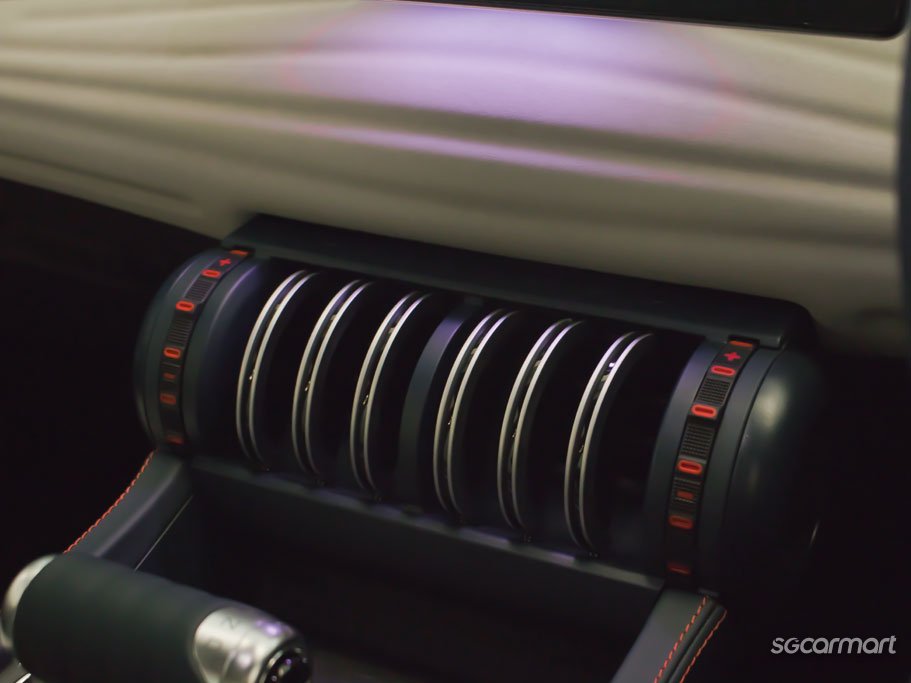
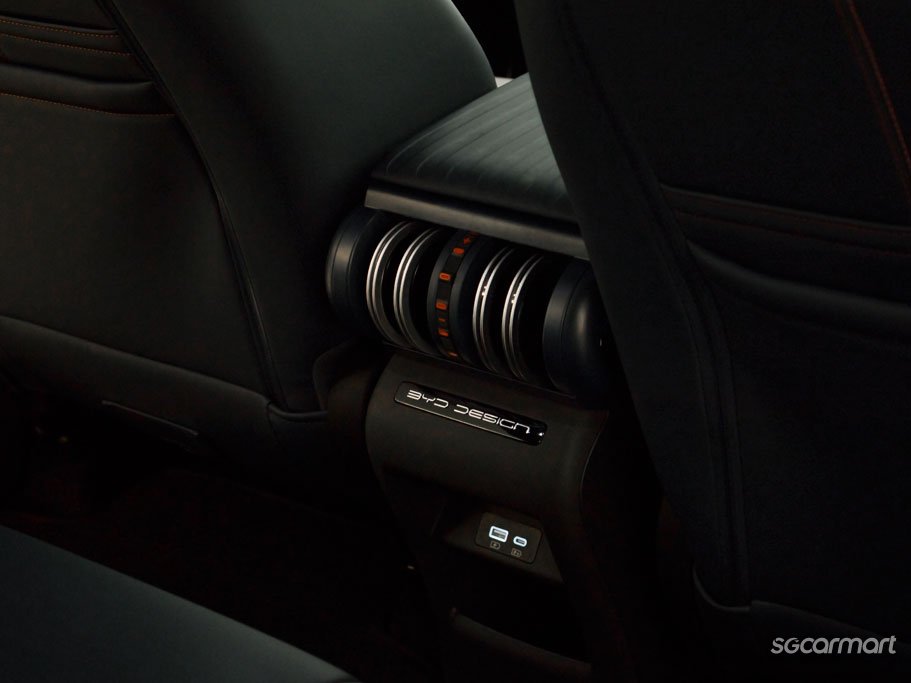
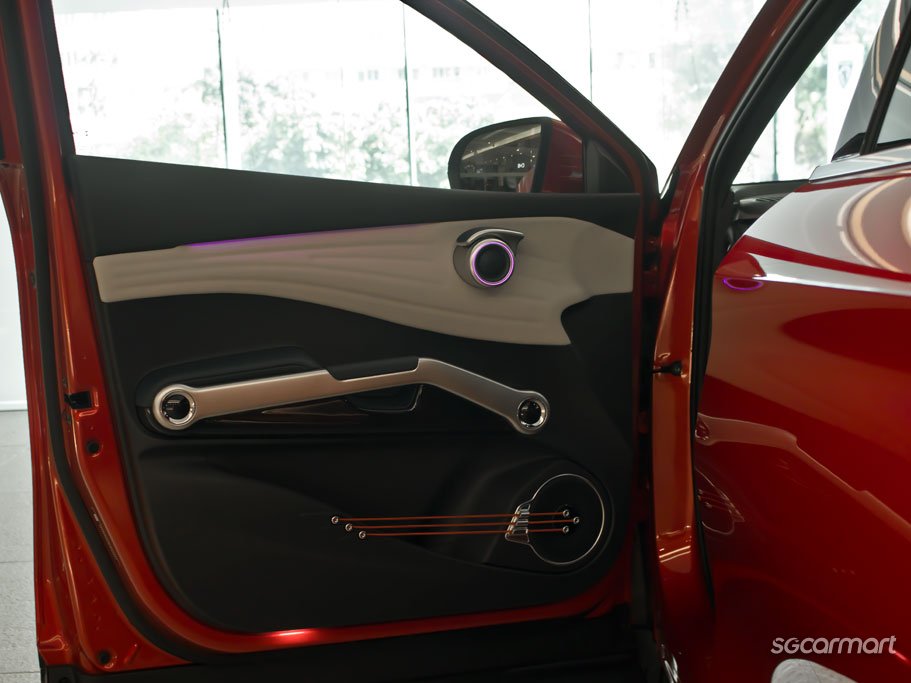
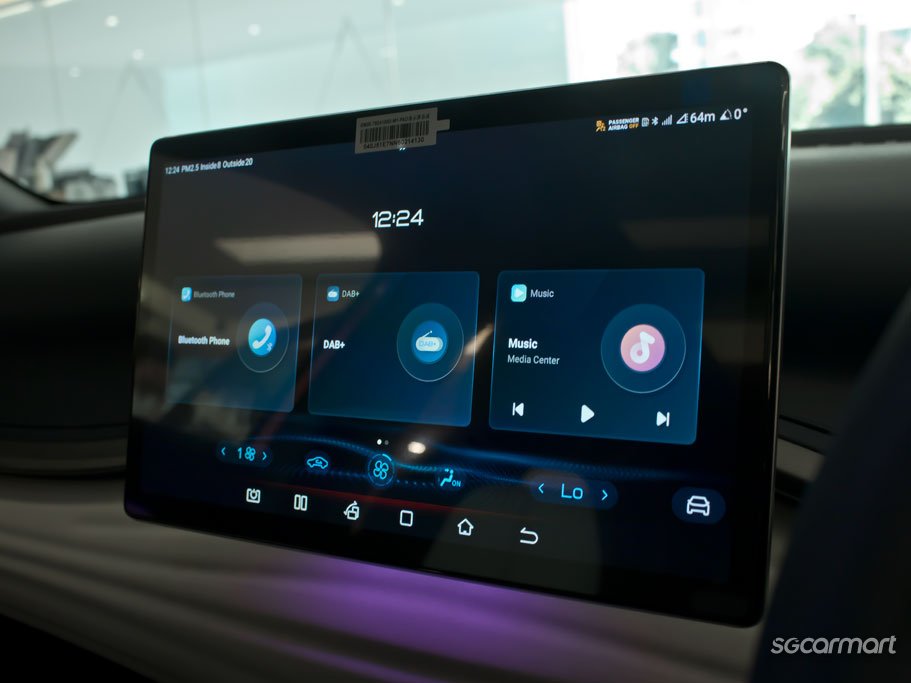
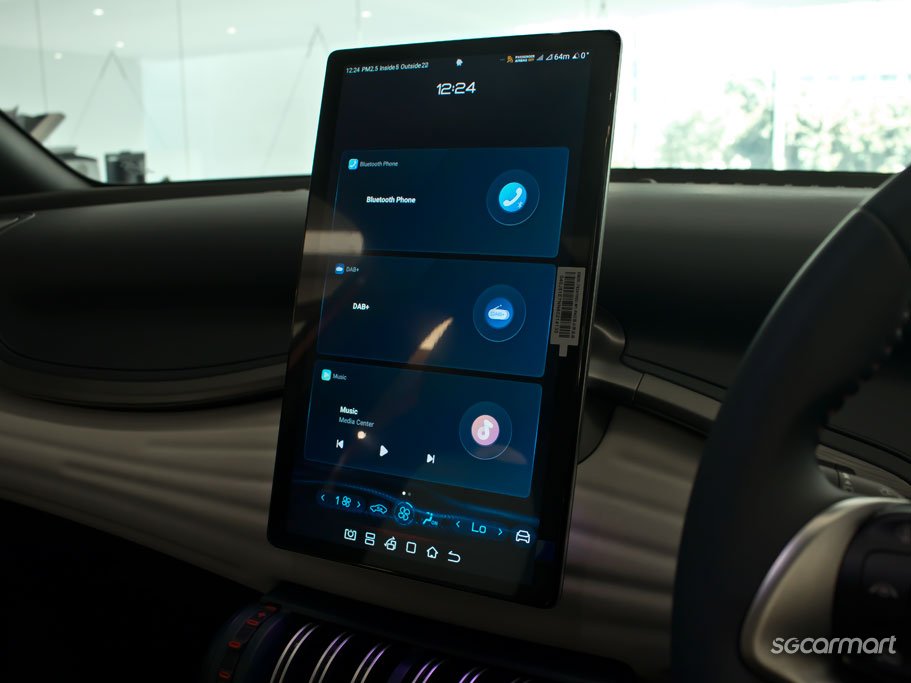

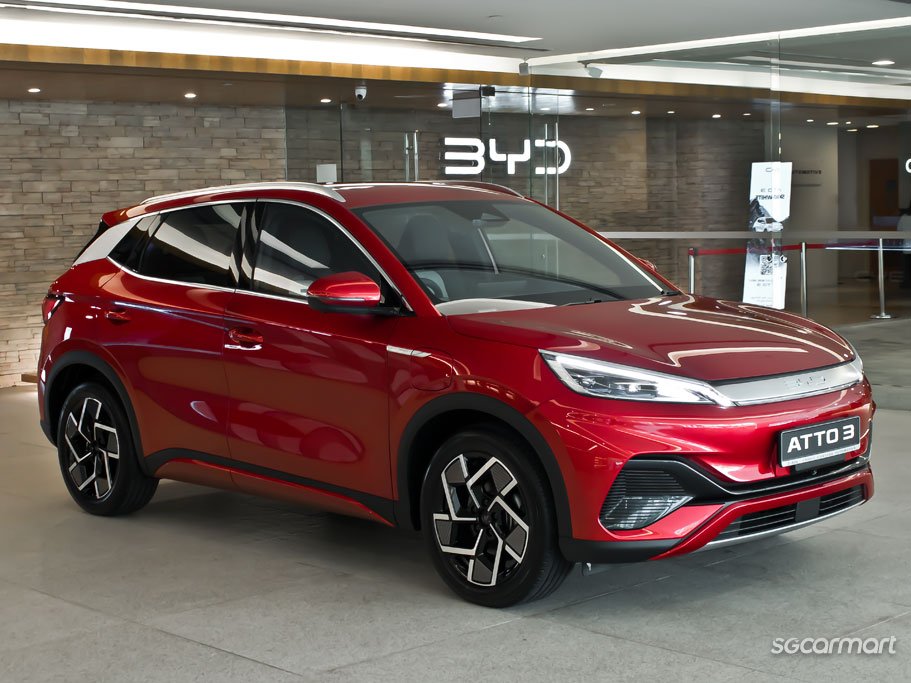
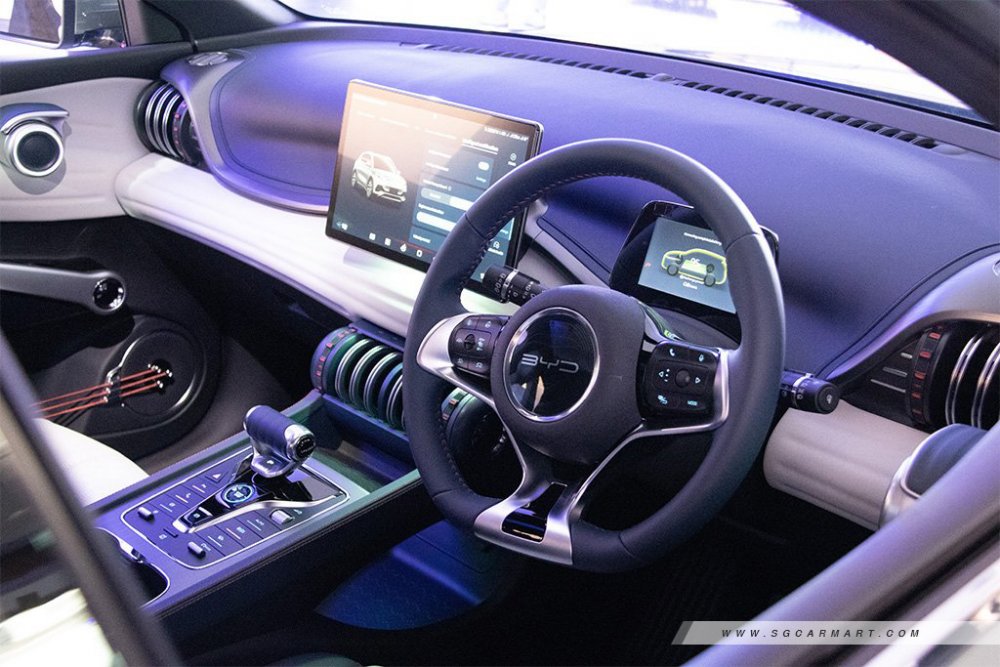
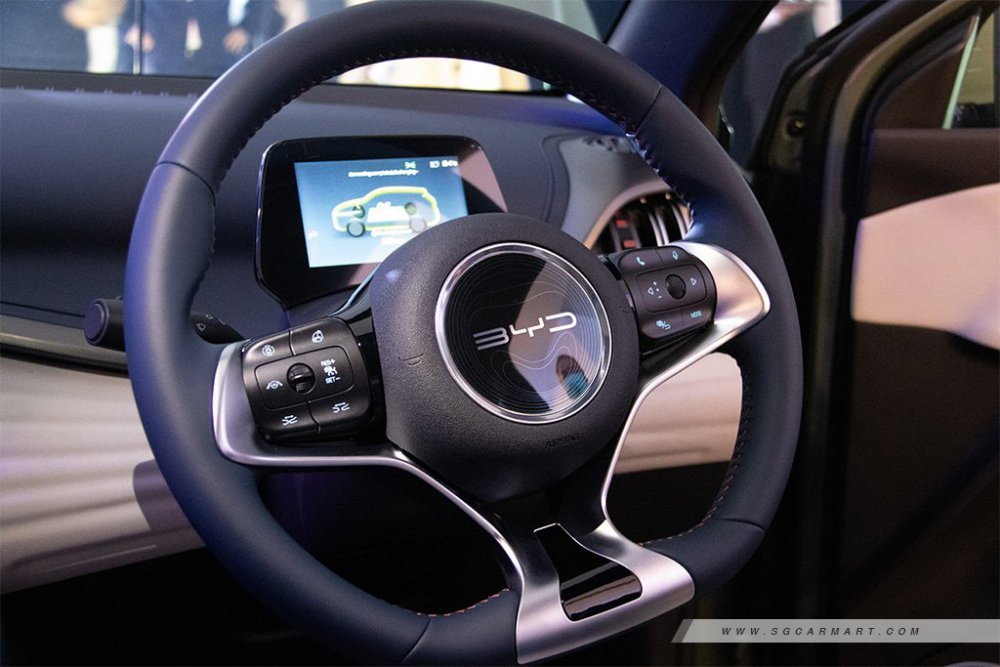
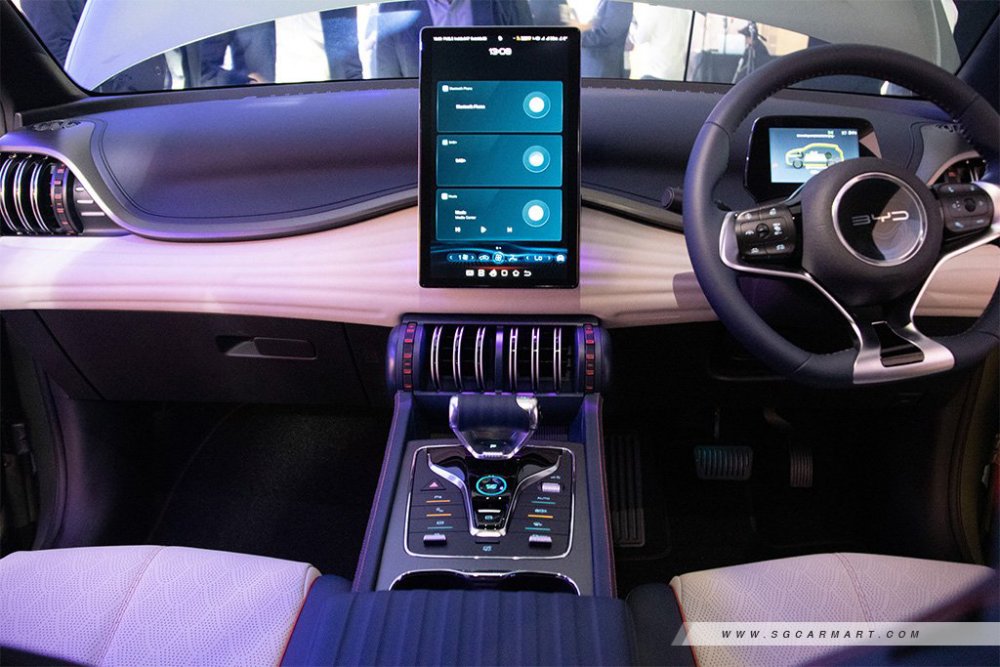
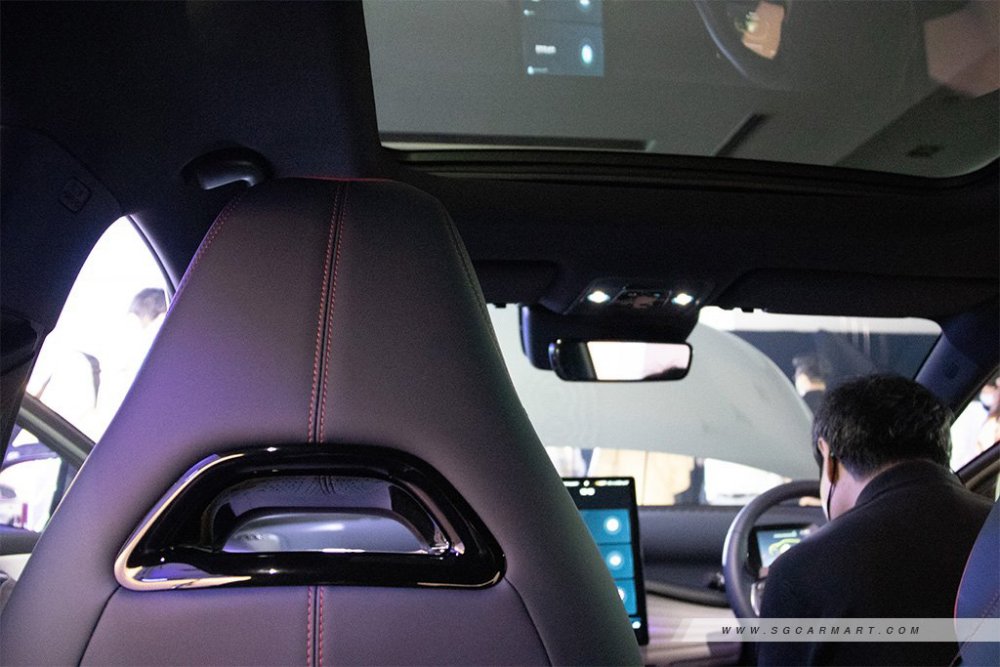
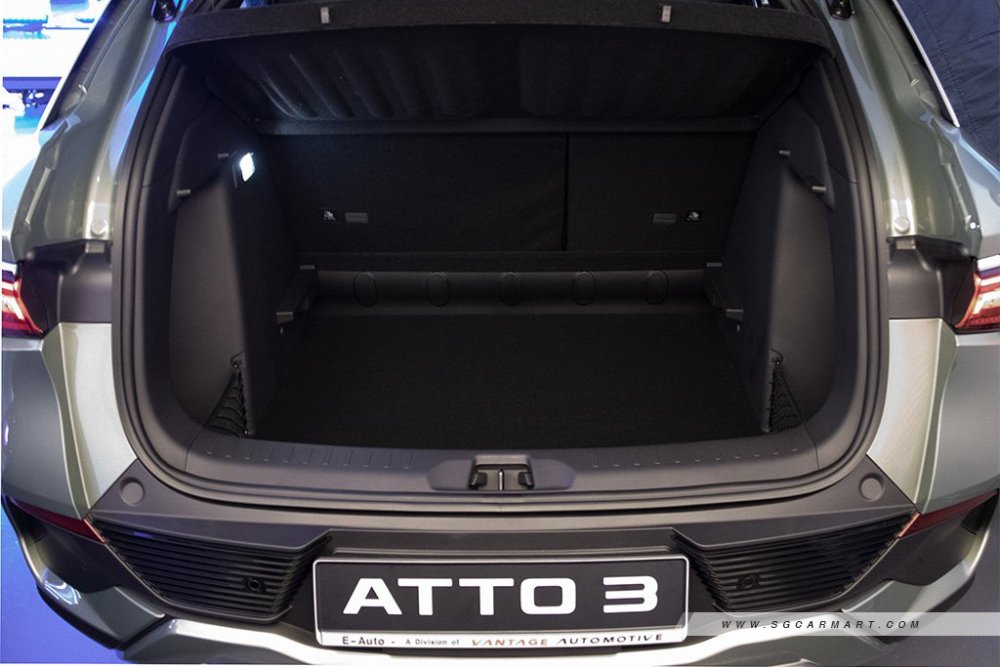
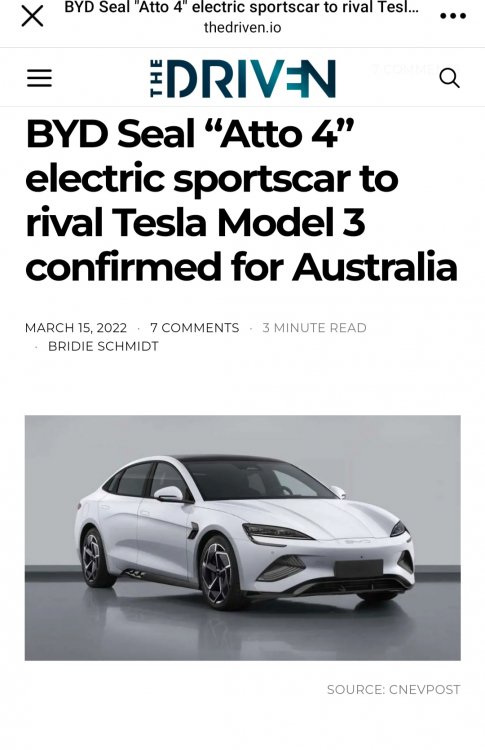
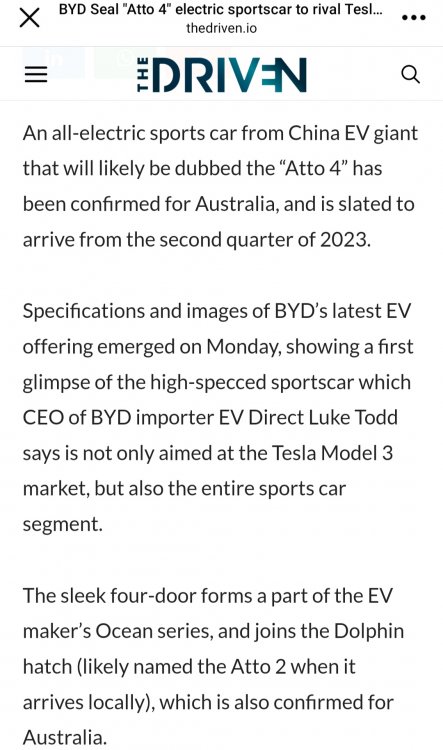


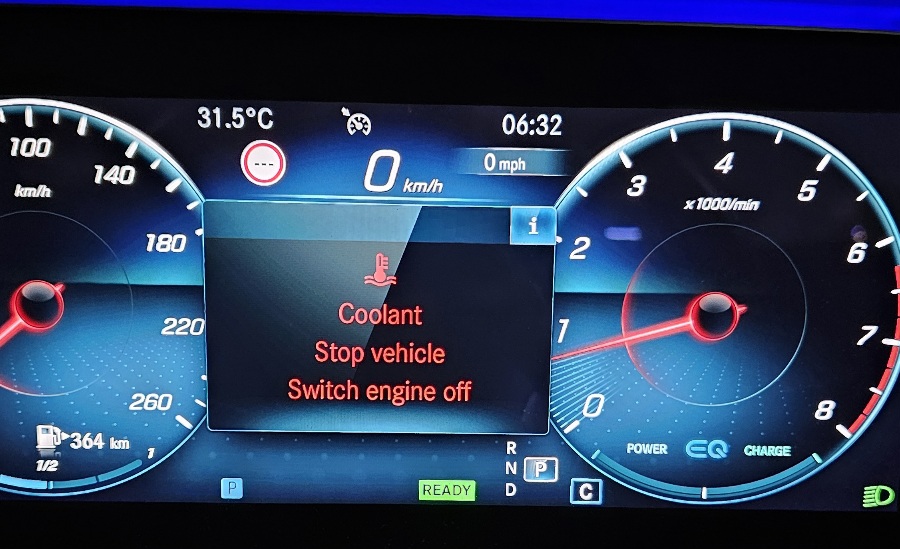
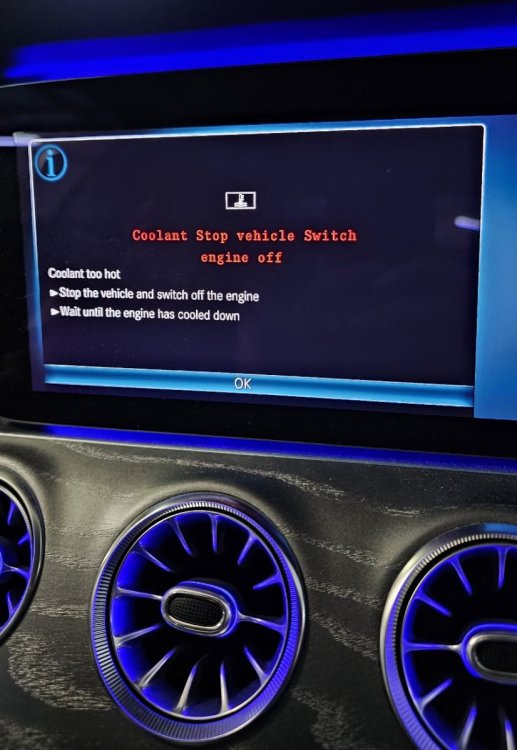







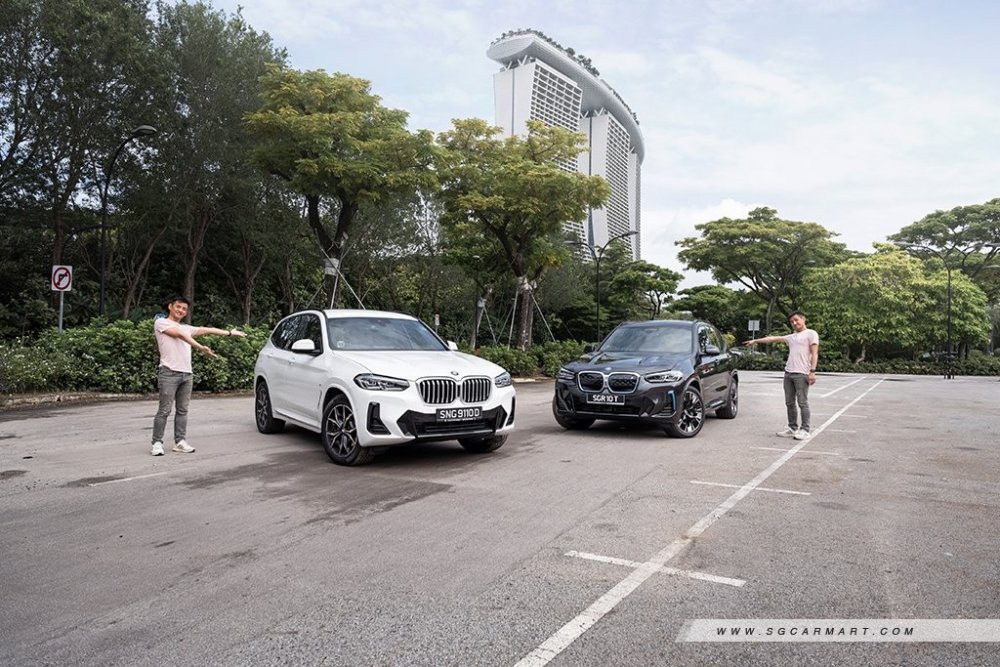
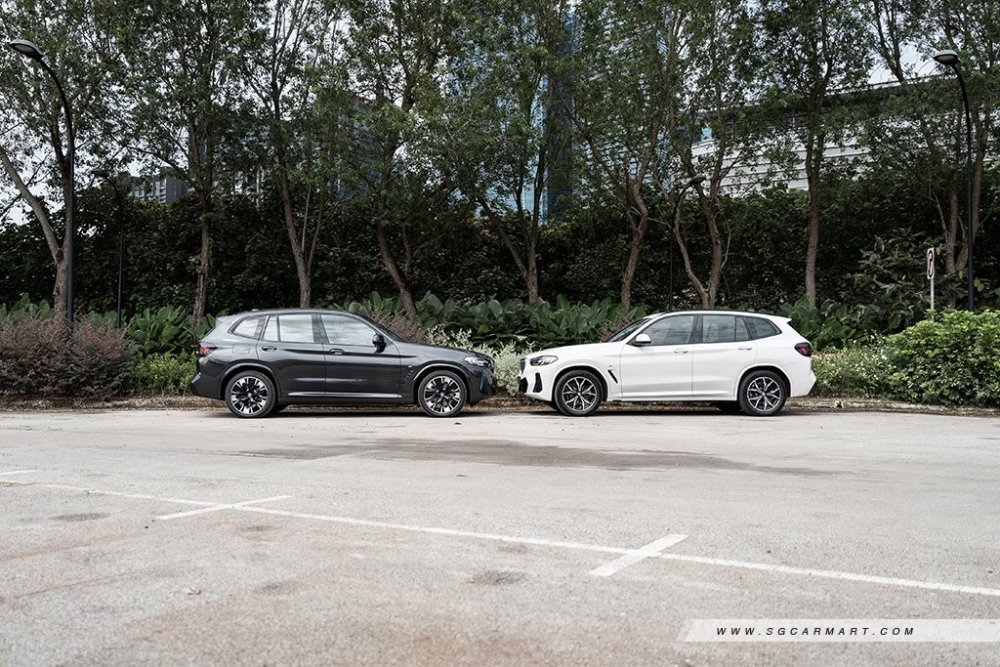
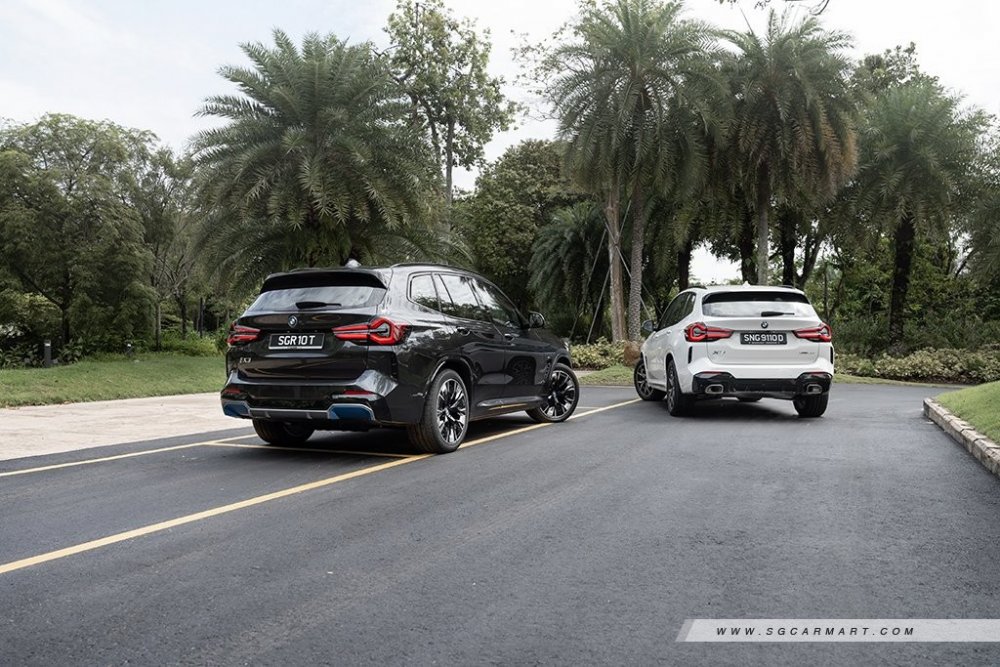
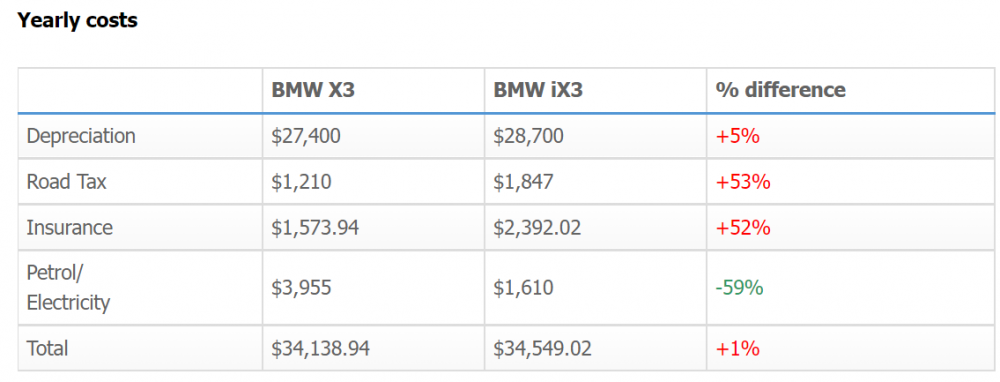


.thumb.jpg.ad73b21bc806c02745605b2692ee1992.jpg)
.thumb.jpg.b76697e1e9aafc2f5f69d8693b27c7bd.jpg)
.thumb.jpg.9fdf6686149cbdc365def5c944f48af0.jpg)
.thumb.jpg.f2a168e40703a5ec633afbe3c8a25247.jpg)
.thumb.jpg.d08dff83d9ca3a9676f6455f0320f6fe.jpg)